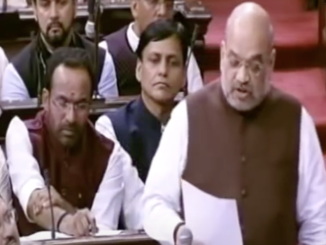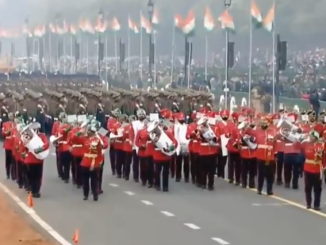
The age-old adage, “Good fences make good neighbours,” by Robert Frost in his poem, Mending Wall, alludes to the importance of a resilient fence and hence a robust defence apparatus to keep one’s neighbours at bay. For many a country, a strong defence is central to their existence. For others, it might just be a matter of prestige.
For Pakistan, such a fence and thus, de-fence is vital for its survival. For a country that has been on the brink of war several times in the last two decades, the need for such a fence is a pre-requisite that cannot be stressed enough. Externally, Pakistan faces an existential crisis vis-à-vis India. The western borders too, pose other complex security issues. Internally, the sovereignty of the state has not only been challenged by militants and terrorists but at times, overthrown as well, with Swat and Waziristan as the prime examples. It must be considered that these events are not stories of the past or legends that Pakistanis have heard from their forefathers, rather almost every Pakistani has not only been a witness but also an affectee. But then, Pakistan also saw these destructive elements uprooted to bring back stability and normalcy, and lest we forget, peace itself carries a price tag, especially when enemies are in abundance. For a state like Pakistan, to rise from ashes was nothing short of a miracle and was only possible due to sustained military efforts that have since been largely successful.
It is therefore important to analyse how Pakistan has managed to sustain combat on several fronts, especially when our resources are scarce and the adversaries with seemingly infinite wherewithal continue to charge at our doors. Pakistan’s threat spectrum, owing to its porous and long borders, coupled with adversaries or unfriendly neighbours flanking from east and west, has rendered it in a perpetual stability-instability paradox. Interestingly, the country continues to defend itself with a budget that is almost 1/10th the size of India and yet the defence mechanism caters to multifarious levels of threat remarkably well.
Nevertheless, the defence budget often comes under scrutiny and critique wherein the requirements of the military are termed as somewhat superfluous and even gratuitous. The argument remains that the surplus could very well be reduced to be utilized by the government in other sectors, such as health and education for example. Such voices are either whispers or inserted in layers of intellectual discourse for the keen reader to grasp. For some, such a revelation may invoke a disheartening realization that their country’s defence forces do not care for the citizens of the country who need schools, hospitals and infrastructure. That the military is just another department that wants more for itself. It is important, however, to question whether the assertions hold any ground.
The economics of defence essentially give the government an insight into the management of government budget and expenditures during war and peace times. A quick appraisal of Pakistan’s defence requirements in the last five years essentially shows that both externally and internally, the need for a robust defence has perpetually favoured the state against militants terrorizing the country on one hand, and India’s continued military expansion and modernization with the annexation of Kashmir in August 2019 on the other. As per the Associated Press, Pakistan’s homeland security (HLS) expenditure, increased to US$1.0 billion in 2019 from US$0.9 billion in 2015. Furthermore, a report on Pakistani Defence Market – Attractiveness, Competitive Landscape and Forecasts to 2024, shows that between 2020-2024, major expenditure is anticipated to focus on the procurement of equipment to augment air defence capabilities, enhance operational capabilities of the current fleet of naval vessels, and better communication and surveillance systems in the next few years to bring Pakistan at par with India.
Moreover, the intricacy and sheer complexity of preparing a defence budget must be analysed as well – as the defence budget caters not only to logistics, training, mobility, operationalization, intelligence, reconnaissance and surveillance, defence production, procurement of weapons systems and indigenization of such systems amongst several other operational costs, but also to the salaries and pensions of serving and retired personnel respectively – which, alone, in 2019 amounted to 327 billion Rupees – as well as expenditure on food, rations and routine costs that ensure that the personnel deployed in far-flung areas do not lose their morale as they fight for their country.
Nevertheless, it is imperative that the citizens in a democratic country hold their governments and officials to account where required and appropriate to do so. With the help of a comparative analysis of the budget versus the overall expenses of the defence forces, better judgement and understanding can be formed, and it can help trigger an informed debate on the subject. It would also nullify unnecessary debates that seek to settle scores between political adversaries and assist in circumventing needless controversies at the same time.
![]()




Be the first to comment